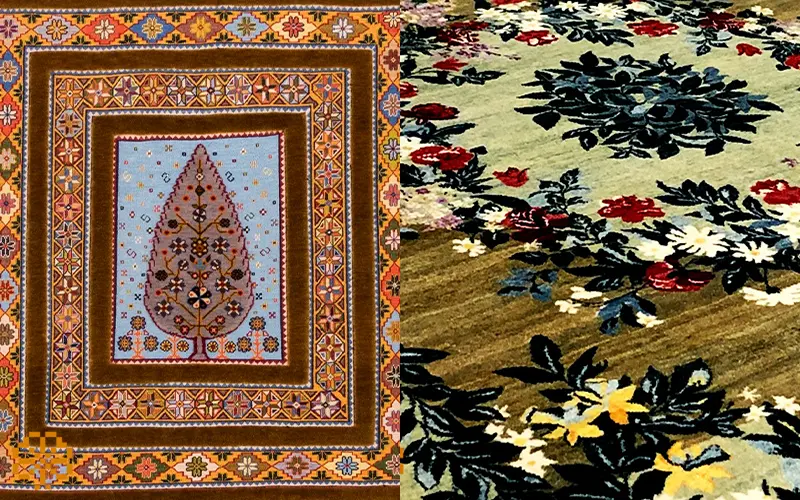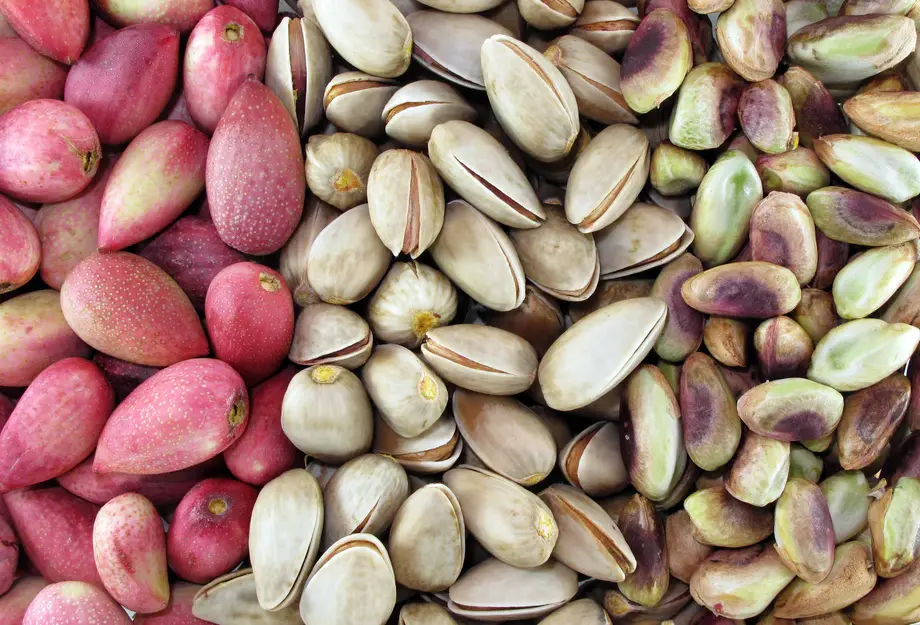The difference between carpets and kilims is one of the questions that many lovers of these two original Iranian arts are looking for answers to. Remember that it is true that these two weaves may be similar at first glance, but when we look at their structures, prices and other specifications, we will see many differences.
In this article, we are going to review 8 of the most important differences between Farahan carpets and rugs and give you the opportunity to choose one of them if you want to buy; Help us find the best option.
The difference between carpets and kilims
First of all, it is necessary to point out that what we mean by carpet in this article; Fluffy carpets or rugs. So let’s go to a detailed review and comparison between carpets and kilims:
1. The main structure in the tissue
The first and main difference between carpets and kilims is their structure. If you pay attention to the carpets under your feet, it has three main dimensions: length or the same carpet weave, width or the same carpet weft and height or the same carpet lint.
But if you have seen a kilim up close, and especially if you have touched it, if you compare it to a carpet, you will definitely feel that it has something less, and this is exactly the feeling, because kilims do not have a third dimension, ie height or They are fluffy.
In carpet weaving, it is done in such a way that the short cut threads (piles) are wrapped around the threads and then the wefts are placed on them and tighten them. But in the texture of the kilim; You have the same structure as the warp and weft, but only the weft passes through the ends of the warp and creates a cohesive structure by compression, not short yarns.
2. Carpet and kilim raw materials
The second case is the difference between carpets and kilims in the raw materials used for their texture. Kilims have a longer history than carpets, and this has led to the use of more traditional raw materials in fabrics.
Wool and cotton yarns are the two main raw materials for weaving in kilims. But the fibers used in carpets, in addition to wool and cotton, also include other options such as silk and fluff, and of course, in the texture of car carpets, these options increase and synthetic fibers are added to them.
3. Different rugs with kilims
The fabrics used for weaving handmade carpets and kilims are placed in two main categories.
Horizontal or supine: These types of hangers, as their name implies, are placed horizontally and lying on the ground and the weaver sits on them and does the weaving work.
Vertical hanger: This type of hanger is either placed upright on the base or leaned vertically against the wall and the weaver in front of them does the weaving work.
Carpet hangers are used vertically in more than 90% of cases today, except in nomadic areas where the hangers are difficult to use in tents, such as Qashqai handmade carpets. But kilim weaves are exactly the opposite of carpet, in more than 90% of cases are horizontal.
4. The difference between the design and layout of the carpet and the kilim
In the first part, we explained that there is a difference between carpets and kilims in the presence of lint. The use of thousands of knots in the carpet texture gives the weaver a very high power of action to create very different designs and patterns.
But in the texture of the kilim, due to not using lint, you are very limited in creating different designs. To the extent that in many cases, even their weaving is done without any pattern and in a completely abstract way, and the weaver creates his desired design on them based on his imagination.
But in carpet weaving, the use of maps is a common and obligatory type. For this reason, to start weaving the carpet, it is necessary for the weaver to first learn how to read the carpet.
5. Fast weaving of kilims compared to carpets
According to the previous section that we mentioned about the difference between carpets and kilims, you should have guessed that the texture of kilims will be much faster and easier than carpets.
In the weaving of carpets and kilims, it is a very common term that is used to weave carpets and kilims into flat weaves. In fact, in carpet weaving you need to spend a lot of time to have details. While in kilim weaving, you will not be able to create all these details at all.
Read more: Saneh or Sanandaj handmade carpets | Check specifications + shopping guide
6. The difference between carpets and kilims in the amount of raw materials
We said that both carpets and kilims have warp and weft and the main difference was in the lint. Each rug in a row needs between 100 and 200 knots, and this has made the difference between the rug and the kilim very large in terms of the initial amount.
According to studies, the weight of raw materials for a 6-meter woolen carpet is about 50 kg, while this amount is about 9 kg for a kilim. The complete difference is obvious !!
7. Differences in washing
We said that in terms of weight, carpets are much heavier than kilims, so this can definitely be effective when washing.
Also, the type of carpet texture makes it much more difficult to stain and clean it than a kilim, which has a flat and smooth surface.
Of course, it is necessary to mention that kilims also have different types, and woolen kilims have a very high water absorption, and certainly these types of kilims have high hardness for washing. The list of the most important types of kilims is as follows:
Simple or flat kilim
One-sided kilim or varnish
Embossed or fluffy kilim
Khamseh or Fars kilim
And …
8. The difference between carpets and kilims in terms of application
The type of texture as well as the speed of weaving the kilim has caused this product to be much less durable and delicate than handmade carpets, and this has also made the use of kilim different from that of carpets.
Of course, although in terms of value and exquisite kilim is less valuable than carpet, but still kilim has a very good durability and quality.
Today, it is no longer very popular for use and spreading, and has almost become a luxury product that is used only to set modern decorations, and has found more decorative application than using it!
Of course, it should be noted that nowadays, handmade carpets can also be used to set modern and classic decorations, but perhaps its higher price has made it not a very good option for decoration design, and on the other hand, the carpet and the beauty of the carpet Handmade rugs have also made these rugs both decorative and functional.
In this article from Farahan Carpet, we tried to review all the points you need to know about the difference between carpets and kilims. But if you have any questions or ambiguities about what has been said, you can share it with us in the comments section.



